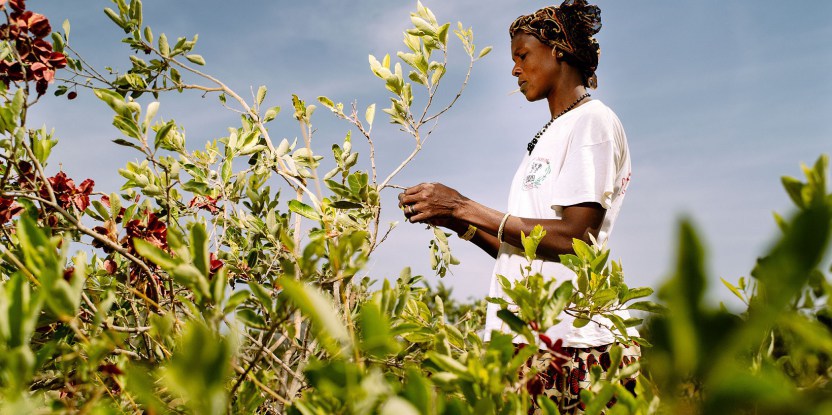MONTPELLIER, France — Projects to mitigate and adapt to climate change generally address two different things: cause and effect, respectively. Rarely, though, are mitigation and adaptation projects integrated into one, despite the widely acknowledged benefits of doing so.
“On the ground, there is evidence that these two approaches can be combined. But at the international level, there is no fund explicitly supporting a combined approach,” said Giacomo Fedele, a research fellow at the Center for International Forestry Research (CIFOR), at the recent Resilience 2014 conference in Montpellier, France.
This is despite the agreement of nearly all respondents in his survey of 22 climate change fund managers that there would be clear benefits in integrating adaptation measures into mitigation projects.
The people Fedele interviewed run offices in charge of attributing funding to climate change projects on behalf of international bodies such as the European Union, the UK’s Department for International Development (DFID), UN-REDD, or the World Bank. While 77 percent of existing climate funding goes toward mitigation — curbing the greenhouse gas emissions that cause climate change, such as those caused by deforestation — most of those experts say mitigation projects should include measures to help local communities adapt to shifts in climate patterns.
The experts are more divided on the prospect of adding mitigation measures to projects primarily aimed at adaptation, and some of them warned of the risks of blurring priorities or making integrated projects less efficient and harder to monitor.
Yet even those who recognize the benefits of integrating mitigation and adaptation said that barriers were preventing them from doing so. For example, “if you have requirements for mitigation and adaptation, it takes more time to prepare project proposals, with more experts,” Fedele said.
Yet CIFOR scientist Bruno Locatelli remarked that the strongest obstacles stemmed from the separation of mitigation and adaptation throughout international climate negotiations as well as institutional divisions within donor agencies. “In many cases, fund managers are in a position to act on the barriers they mentioned,” he said. “But they receive money from agencies and ministries that target their funding solely towards mitigation (for example in the energy sector) or adaptation (if they focus on development).”
Locatelli regretted that the division shaped action on the ground as project developers considered only one side of the coin when designing their projects.
“There are a lot of missed opportunities to have synergies or avoid trade-offs,” he said.
One example was a carbon sequestration program in Belize studied by Rico Kongsager of the United Nations Environmental Programme’s Risø Centre on Energy, Climate and Sustainable Development. The case study found that ring-fencing blocks of forests for conservation had been successful in stopping deforestation. “But there is not much social adaptation included in the projects, so there is not much that the projects have done for the local communities,” Kongsager told the conference. “This project is like an island.”
Kongsager found that very little had been done to address threats associated with climate change, such as wildfires or hurricanes. He concluded that such narrowly focused projects constituted disincentives to climate-friendly rural development, as illustrated by the destruction of buffer forests in areas where farmers had switched to mechanized agriculture right next to the protected area.
“This is an example in which project developers could make carbon storage more sustainable if they included adaptation, which could create goodwill among local populations,” Locatelli said.
Premium carbon payments or easier access to carbon markets for mitigation projects that do include adaptation measures are among the solutions considered to tackle the disconnect between the two approaches, and Fedele said that the time was right to push for more integration as talks are under way to set the rules for projects to be funded by the new international Green Climate Fund.
For more information about the topics of this research, please contact Bruno Locatelli at b.locatelli@cgiar.org.
We want you to share Forests News content, which is licensed under Creative Commons Attribution-NonCommercial-ShareAlike 4.0 International (CC BY-NC-SA 4.0). This means you are free to redistribute our material for non-commercial purposes. All we ask is that you give Forests News appropriate credit and link to the original Forests News content, indicate if changes were made, and distribute your contributions under the same Creative Commons license. You must notify Forests News if you repost, reprint or reuse our materials by contacting forestsnews@cifor-icraf.org.

